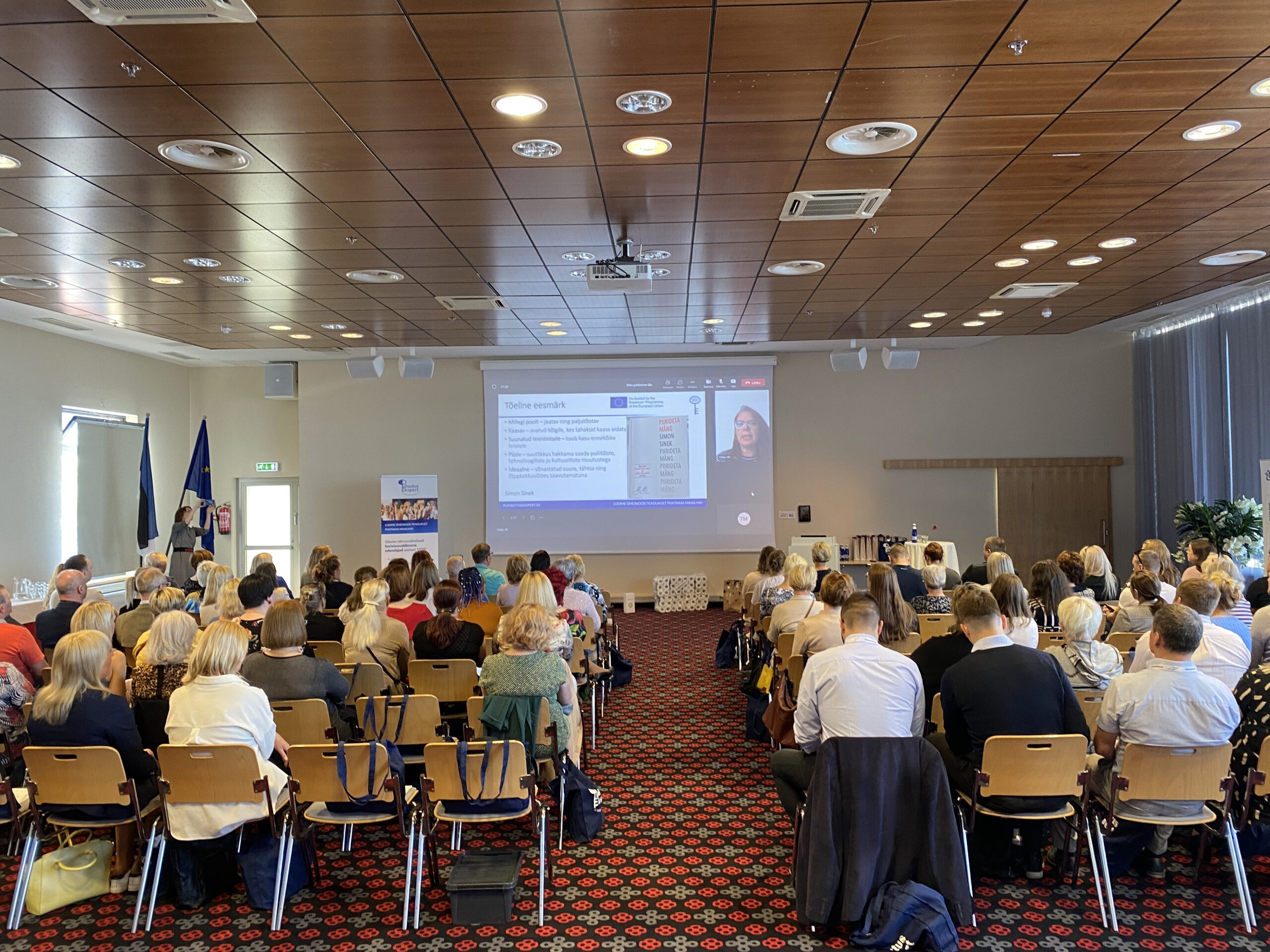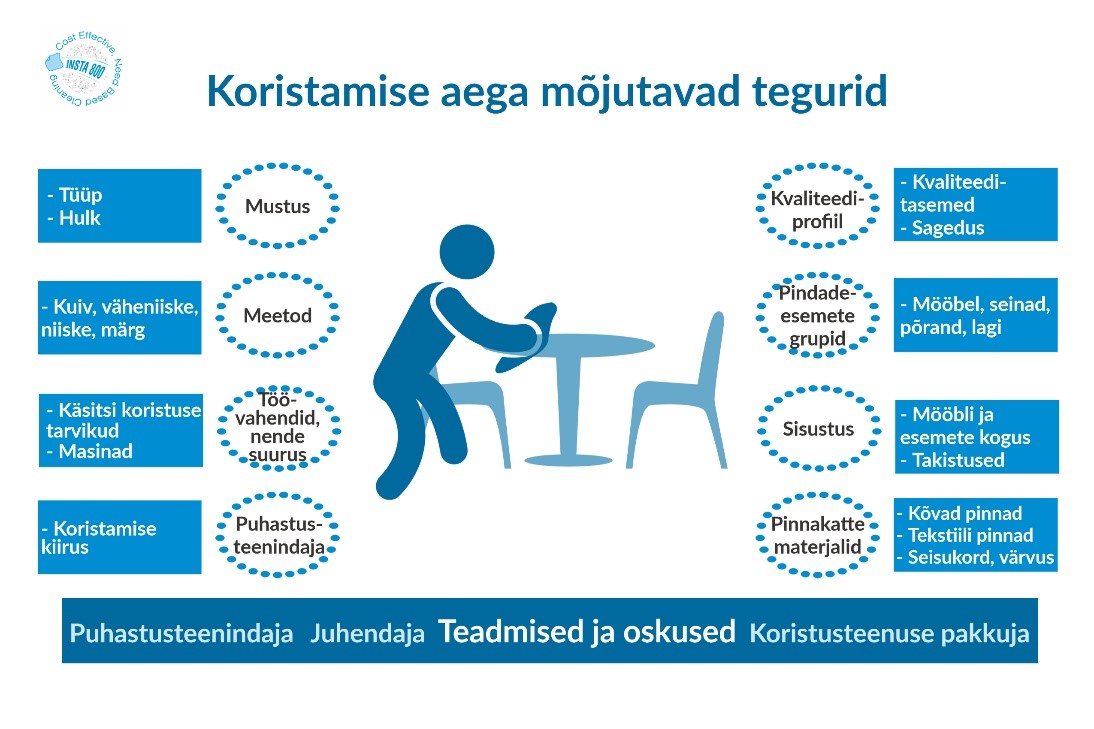info@puhastusekspert.ee +372 5611 1048
Presentation of the Results of the Project “Cost-effective Needs-Based Cleaning – INSTA 800”
Puhastusekspert is an international leader in the cleaning sector in Estonia. We consider it important to both teach and guide others, as well as to be learners ourselves. To gather knowledge and educate ourselves, Puhastusekspert initiated the international Erasmus+ project “Cost-effective Needs-Based Cleaning – INSTA 800”. INSTA 800 (in Estonia, EVS 914 Agreement and Assessment of Cleaning Work Quality) is an official standard in seven countries. For this purpose, partners from Denmark, Sweden, Finland, Norway, Iceland, and Latvia were involved to share experiences in using the standard and, consequently, to create new materials that would harmonize its application. We presented the project results at a seminar held on May 25.

With this project, we hope to broadly convey the idea that cleaning should primarily focus on results, and only those activities should be performed that most effectively remove dirt from surfaces that are actually dirty. In other words, the value of working time is increased.
INSTA 800 is a good tool that helps to agree on cleanliness levels and assess whether the agreed cleanliness has been achieved, and to precisely identify what needs more attention in cleaning and what needs less, so that working time has maximum value.
The project resulted in:
- Experiences of using INSTA800 in seven countries. On our website, there is a valuable collection of experiences in seven languages. You can find it HERE.
- Cleaning time matrices for five typical room types. We conducted 900 experiments to determine how much the dirt level before cleaning and the expected cleanliness level affect actual working time. We conducted the experiments in five typical room types: office, restroom, corridor, classroom, and staircase. It can be stated that, according to INSTA 800, a result one level cleaner or more dirt before cleaning means an additional 15-20% in terms of working time.
- Effective training programs and methodologies for INSTA800 for different knowledge levels. We analyzed standard-compliant training courses in various countries and concluded that training at levels 3 and 4 is satisfactory and effective in different countries, but knowledge level 2, i.e., training for cleaning staff, needs improvement. There was also a lack of effective ways to convey information to clients. In June 2022, a meeting between partners will take place in Riga, where we will test the innovative training programs developed within the project.
Time Spent on Cleaning and its Value
Working time is the largest cost of cleaning services, despite the fact that the salaries of cleaning staff are often low. Workloads are typically defined on a square meters/hour basis. However, the question arises as to what basis these “norms” are set. Cleaning time is actually influenced by many different factors. In the project experiments, we aimed to observe only the impact of dirt and the achievable cleanliness level on working time.
The goal was to measure the impact of dirt and cleanliness on working time, but we gained several other valuable lessons, which can be summarized as follows:
- When washing with a machine, detergent residues were still being removed for weeks, which highlighted the true extent and problem of overdosing. If surfaces have cleaning agent residues, such a layer acts like glue for dirt to adhere to.
- In practice, the amount and age of dirt before cleaning have a greater impact on working time. Older dirt requires more time to remove, even though the accumulation might be the same according to INSTA 800. Therefore, it is advisable to remove dirt promptly.
- Cleaning staff “want to clean” habitual spots, but not where dirt actually needs to be removed. It is important to teach cleaning staff to notice and remove dirt based on need. It is especially worthwhile to analyze floor cleaning, as generally, floors only need to be cleaned when they are visually dirty.
- It is important to define a realistic quality profile and to train cleaning staff accordingly, so they can effectively remove dirt that should not be on surfaces.
- At the beginning of the service period, it is advisable to immediately conduct a level assessment and rectify any cleaning deficiencies. Only then is it possible to organize cleaning optimally. It is important that the service buyer has clearly defined how deficiencies will be rectified – whether through a separately purchased deep cleaning or if the service provider must calculate additional work into the service price. Depending on the situation, this can be very time-consuming. The INSTA 800 standard includes a corresponding point in chapter 9.
- Excessive cleaning and cleaning of already clean surfaces is an unplanned common activity, meaning unnecessary working time is spent.
- At the beginning of the contract, it must be agreed how damaged surfaces are inspected, and it is important to differentiate between dirt and a damaged surface.
- It is important to immediately remove stains from walls, textiles, and similar places during maintenance cleaning, because over time they become fixed and are difficult or impossible to remove.
- Dirt determines the method – it is important for cleaning staff to be aware of the choice between dry, slightly damp, damp, and wet methods. Incorrect methods (too wet, not dried) leave layers on surfaces, which are much more time-consuming to remove.
- The cleanliness and condition of cleaning textiles and accessories are important, otherwise, unnecessary excess working time is spent, and dirt remains unremoved, or surfaces are merely smeared.
- It is important to define a needs-based frequency, meaning cleaning is done when dirt has accumulated on surfaces to an extent that it should not be there. Soiling usually occurs in connection with activities in the room and visitor traffic. Therefore, electronic visitor monitoring, for example, is beneficial for making optimal decisions that help increase the value of working time.
- If there is little furniture in the rooms, it is reasonable to use higher quality levels to achieve the desired standard. The reason is that, for example, furniture is less likely to get dirty.
- Trained and consciously acting cleaning staff spend significantly less time achieving the same level of cleanliness. The experiment showed a difference of 33%, so quality training that helps people act based on need is a key issue.

Training is a Key Factor in Implementing Cost-Effective and Results-Based Cleaning
Throughout the project, it became clear that one of the most important key factors is the awareness of employees – cleaning managers, cleaning staff, and also client representatives. According to the INSTA 800 standard, the following knowledge levels are defined:
- knowledge level 1 – service provider management
- knowledge level 2 – cleaning staff
- knowledge level 3 – supervisors, inspectors (effective and for improvement)
- knowledge level 4 – cleaning service providers’ planners, service buyer’s representative responsible for procurement, consultants, trainers (effective and for improvement)
In the project, we are primarily streamlining the methods of educating cleaning staff and clients. The results will be published on the Puhastusekspert website in the second half of 2022.
Summary of Benefits from Implementing INSTA800:
- Focus is on the result; as a result of using INSTA 800, cleaning quality has improved and complaints have decreased.
- Other problems external to the service are also easily discovered, which allow for better cooperation.
- Cleaning managers who have encountered results-based cleaning also performed better on other sites.
- Awareness is a key factor – cleaning manager, cleaning staff, cleaning service buyer.
- INSTA 800 is a good tool for those for whom satisfaction with cleaning is important.
- INSTA 800 works when used as prescribed by the standard.
- Correct use of the standard creates exceptional opportunities for satisfactory and sustainable cooperation between the service provider and the buyer.
- If cleanliness is created consciously, and working time, work results, and work processes are monitored, then there are significant opportunities to increase the VALUE of working time spent on cleaning and achieve the required cleanliness with lower costs, saving working time and environmental resources.